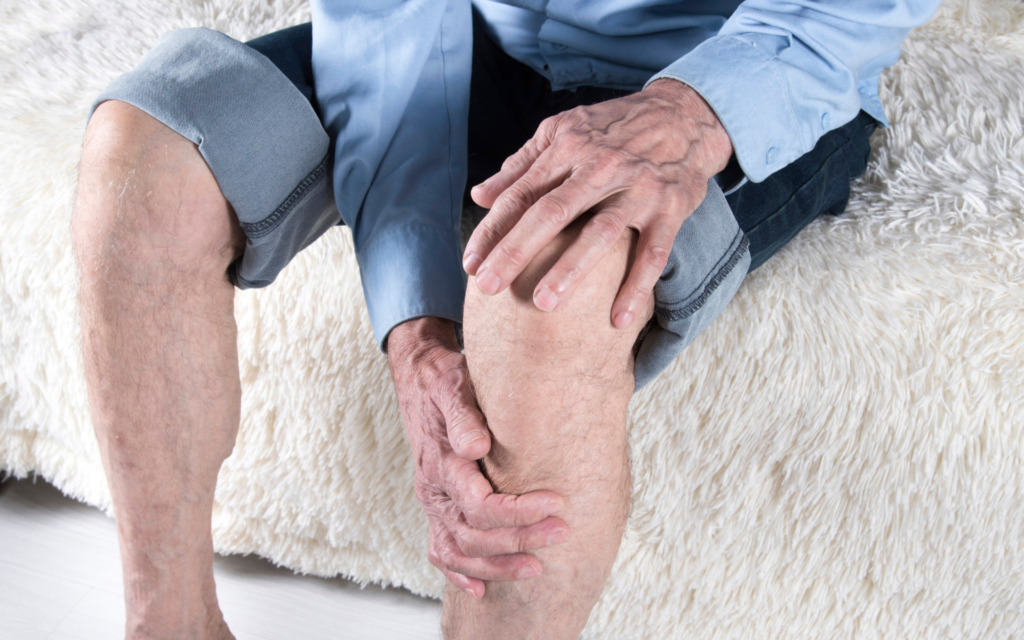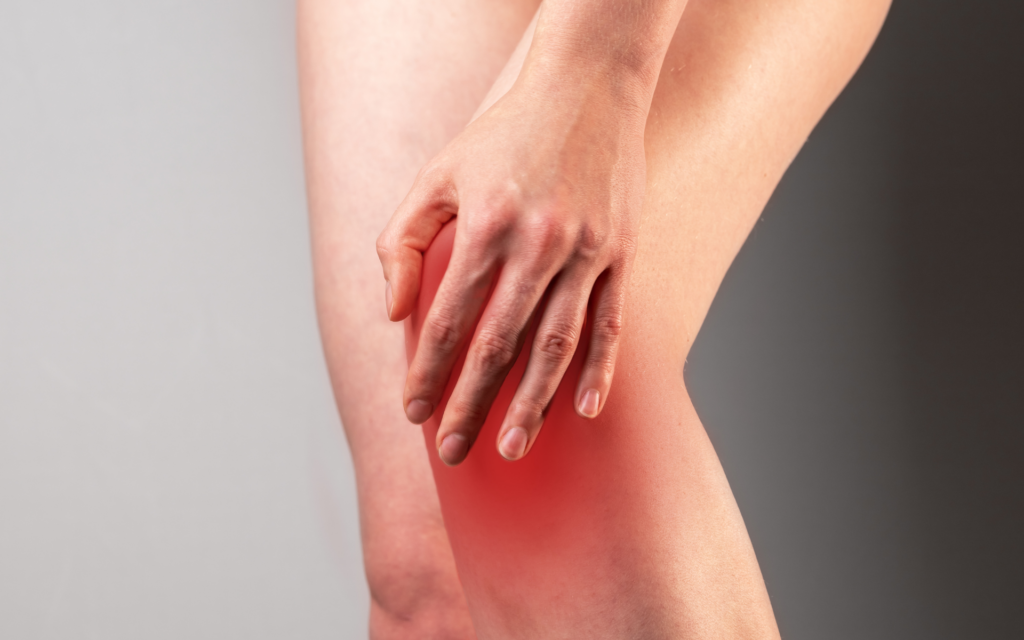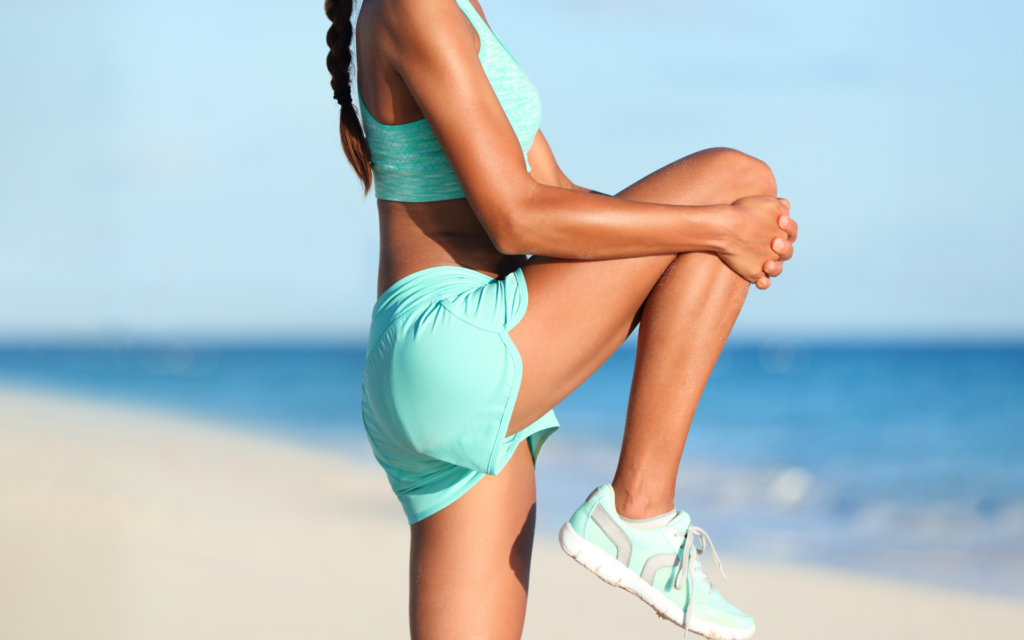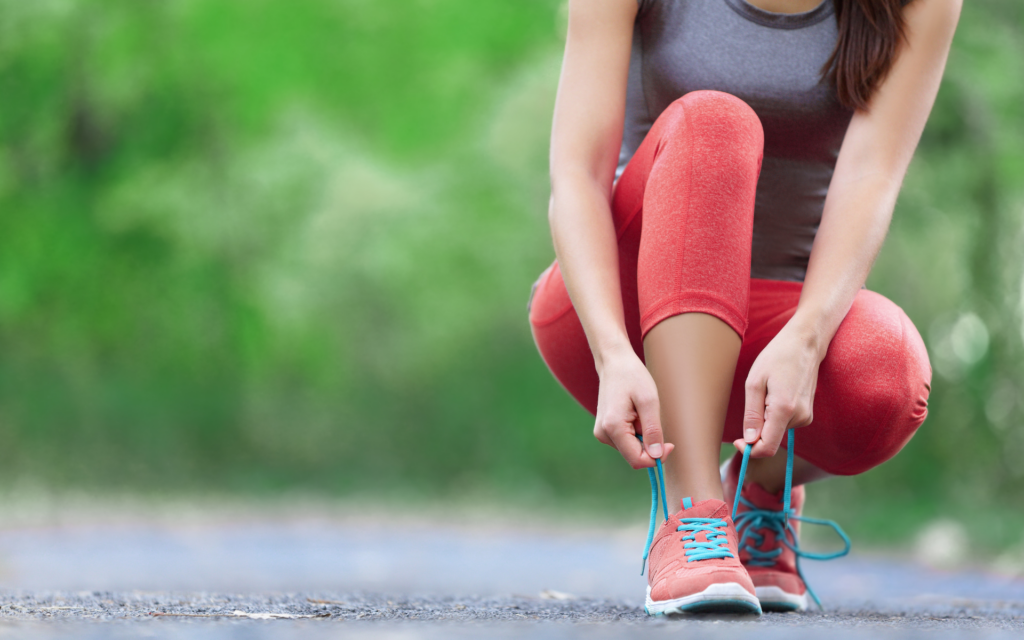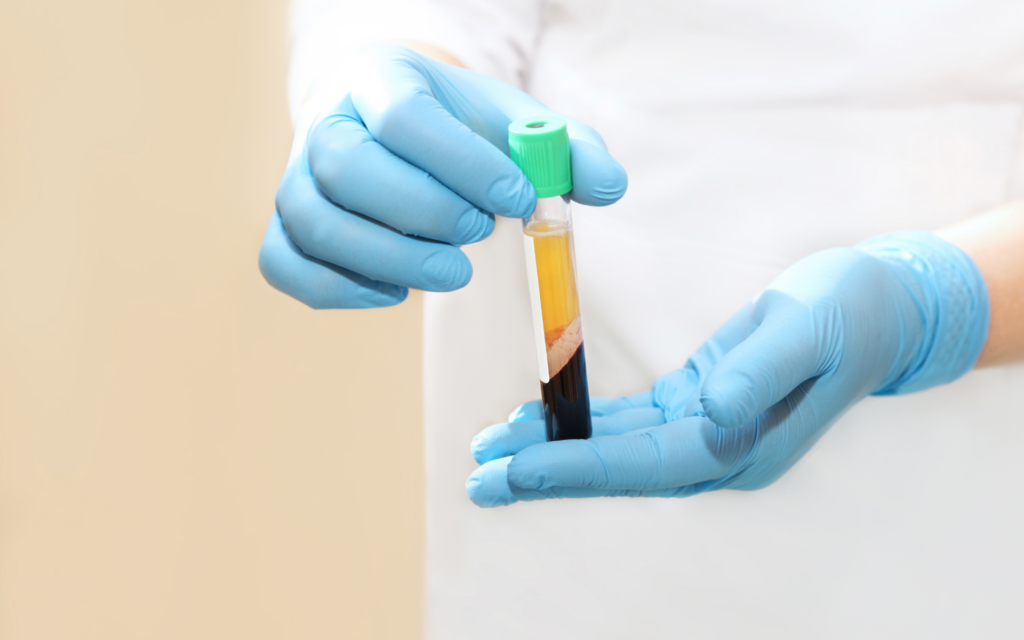Running is a fantastic way to maintain your physical health and overall well-being. It’s an activity that allows you to embrace the outdoors, get your heart rate up, and experience the thrill of pushing your body’s limits. However, for many runners, there is a common adversary that can disrupt their joy of running and that’s where knee pain after running becomes a concern of discussion. Joint pain after running is not only frustrating but can also be a sign of underlying health issues.
In this comprehensive guide, we will look into the causes and solutions for knee pain experienced by runners, shedding light on various medical conditions and ways to prevent, manage, and seek professional help when necessary.
Exploring Common Medical Conditions Leading to Knee Pain
Knee pain is a pervasive issue with a myriad of potential culprits, ranging from overuse injuries to chronic medical conditions. This thorough investigation explores the causes, symptoms, and management of some of the most common medical conditions linked to knee pain.
Among these conditions, we will unravel the complexities of Patellofemoral Pain Syndrome (Runner’s Knee), characterised by discomfort around the kneecap; Chondromalacia Patella, which involves softening or degeneration of the patellar cartilage; Kneecap Bursitis, and so on.
Understanding these conditions and their distinct features is pivotal for those grappling with knee pain, enabling them to seek the right solutions for relief and an improved quality of life.
Patellofemoral Pain Syndrome (Runner’s Knee)
Patellofemoral Pain Syndrome, often referred to as Runner’s Knee, is a prevalent condition among runners. This syndrome is characterised by pain around or behind the kneecap, particularly when bending the knee. It can be a recurring issue for those who engage in high-impact activities like running.
Causes
Patellofemoral Pain Syndrome is a multifactorial condition with several contributing factors. Overuse is a primary cause, particularly among enthusiastic runners who may push their limits without sufficient recovery.
This overuse can place undue stress on the knee joint. Muscle imbalances, specifically weak quadriceps or tight hamstrings, can also impact the alignment of the patella, leading to pain. Inadequate footwear, such as ill-fitting or worn-out running shoes, can fail to provide the necessary support and cushioning for the knee joint. Furthermore, improper running mechanics can strain the knee joint, increasing the likelihood of developing Runner’s Knee.
Symptoms
Common symptoms of Patellofemoral Pain Syndrome include a dull, aching pain around or behind the kneecap, which is exacerbated by activities such as running, squatting, or climbing stairs. Some individuals may also experience a popping or grinding sensation in the knee joint.
Chondromalacia Patella
Chondromalacia Patella is a condition characterised by the softening and degeneration of the cartilage on the underside of the patella, or kneecap. This can lead to pain, especially during activities like running, which apply pressure on the knee joint.
Causes
The development of Chondromalacia Patella is often associated with overuse, particularly in activities like running. Repetitive stress on the knee can lead to the wear and tear of the cartilage. Muscle weakness, particularly in the quadriceps, plays a crucial role in this condition. Weak quadriceps may result in improper patellar tracking, increasing the friction between the kneecap and the underlying cartilage. Additionally, direct trauma to the knee, whether from a fall or other injuries, can contribute to the development of Chondromalacia Patella.
Symptoms
Symptoms of Chondromalacia Patella include pain and tenderness around the patella, often described as a dull ache. Some individuals may also experience a feeling of grating or grinding when moving the knee. This pain tends to worsen during activities such as climbing stairs or running downhill.
Kneecap Bursitis
Kneecap Bursitis, also known as prepatellar bursitis, is an inflammation of the bursa sac located in front of the kneecap. This condition can cause significant discomfort and knee pain, particularly after running or when kneeling.
Causes
Kneecap Bursitis often occurs due to repetitive pressure on the knee. Activities that involve frequent kneeling or direct trauma to the knee can lead to inflammation of the bursa sac. In some rare cases, infection can trigger bursitis. Additionally, overuse, which includes repetitive running or other activities that strain the knee, can also lead to this condition.
Symptoms
Typical symptoms of Kneecap Bursitis include swelling and redness over the kneecap, pain when bending or extending the knee, and warmth and tenderness in the affected area. These symptoms can be especially pronounced after running or activities that place stress on the knee.
Meniscus Tears
Meniscus tears are a common knee injury among runners. The meniscus is a C-shaped cartilage that acts as a cushion in the knee joint. Tears in the meniscus can result from sudden twisting or prolonged overuse.
Causes
Meniscus tears can occur due to a range of causes, with the primary factor being sudden twisting of the knee. A sudden change in direction while running can lead to a tear in the meniscus. Additionally, age-related wear and tear can make the meniscus more susceptible to injury over time. Runners who engage in long-distance running and experience continuous impact on their knees are at a higher risk of developing meniscus tears.
Symptoms
Symptoms of meniscus tears typically involve pain, swelling, and stiffness in the knee. Individuals may find it difficult to move the knee, especially when bending, and might experience a feeling of locking or catching in the knee joint. These symptoms can be particularly troublesome for runners, as they hinder mobility and running performance.
Ways to Prevent and Manage Knee Pain After Running
Now that we have explored some of the common medical conditions that lead to knee pain after running, it’s essential to understand how to prevent and manage these issues. Here are some strategies to help you maintain a pain-free running experience.
Proper Running Mechanics and Form
One of the key ways to prevent knee pain after running is to maintain proper running mechanics and form. Ensuring that your running mechanics are sound can significantly reduce the risk of developing conditions such as Runner’s Knee, and Chondromalacia Patella.
Proper running mechanics involve paying attention to your foot strike. Landing too heavily on your heel or overstriding can increase the impact on your knees, potentially leading to pain and injuries. Instead, aim to land mid-foot and maintain a slight forward lean to reduce the strain on your joints. A mid-foot strike can help distribute the impact forces more evenly and reduce the load on the knee.
Additionally, consider your cadence, which is the number of steps you take per minute. Strive for an optimal cadence of around 170-180 steps per minute. A higher cadence can help reduce the ground reaction forces that travel up your legs and reach your knees. Increasing your cadence might require shorter, quicker steps, but it can be an effective way to minimise knee stress during running.
Furthermore, focus on maintaining a balanced and upright posture while running. Leaning too far forward or backward can disrupt your body’s alignment and increase the strain on your knees. Regularly practicing good running mechanics can make a significant difference in preventing knee pain and injuries.
Strengthening and Flexibility Exercises
Incorporating strengthening and flexibility exercises into your training regimen can play a crucial role in preventing knee pain after running. These exercises help enhance the strength of the muscles surrounding the knee joint and improve the joint’s stability. Here are some exercises that can be particularly beneficial:
Quadriceps Strengthening
Strong quadriceps muscles are essential for maintaining proper patellar alignment and knee joint stability. Exercises such as squats, lunges, and leg extensions can help strengthen these muscles.
Hamstring Strengthening
Balanced strength between the quadriceps and hamstrings is critical for knee health. Hamstring exercises like leg curls and Romanian deadlifts can help maintain this balance.
Hip Muscle Strengthening
Weakness in the hip muscles can contribute to knee problems. Exercises that target the glutes and hip abductors, such as clamshells and hip bridges, can be beneficial.
Calf Stretching
Tight calf muscles can alter running mechanics and increase the stress on the knee joint. Regular calf stretching can help maintain proper calf muscle flexibility.
IT Band Stretching
Stretching the iliotibial band can be beneficial for preventing knee pain. The use of foam rollers or specific IT band stretches can help keep this connective tissue supple.
These exercises should be incorporated into a well-rounded training program to maintain balanced muscle development and prevent muscle imbalances that can contribute to knee pain. It’s crucial to ensure that you perform these exercises with proper form to avoid any additional strain on the knees.
Orthotic Support and Footwear
Footwear and orthotic support can significantly impact your knee health. Ill-fitting or worn-out running shoes can lead to inadequate cushioning and support, increasing the risk of knee pain and injuries. Choosing the right pair of running shoes that provide adequate cushioning, arch support, and stability can make a substantial difference.
Consider visiting a specialty running store to have your gait analysed and your foot type assessed. This can help you find shoes that are tailored to your specific needs as a runner. Custom orthotic insoles, if recommended by a healthcare professional, can also provide additional support and comfort during your runs.
Also, orthotic support, such as knee braces or patellar straps, can help alleviate knee pain and provide stability, particularly in cases of conditions like Patellofemoral Pain Syndrome. These devices are designed to redistribute pressure and reduce stress on the knee joint.
It’s essential to regularly inspect your running shoes for signs of wear and tear, including worn outsoles or decreased cushioning. Running in shoes that are past their prime can increase the risk of knee pain and injuries. Consider replacing your running shoes at regular intervals to ensure they continue to provide the necessary support and shock absorption.
Importance of Rest and Recovery
Rest and recovery are often underestimated by runners, but they are critical for maintaining knee health and preventing injuries. Overtraining and not allowing sufficient time for recovery can lead to the development of various knee conditions.
When you engage in high-impact activities like running, it’s important to schedule rest days in your training program. Rest days allow your body to recover from the stresses and impacts of running, reducing the risk of overuse injuries. Additionally, incorporating lower-impact activities like swimming, cycling, or yoga on rest days can help maintain your fitness while giving your knees a break.
It’s highly essential that you listen to your body and pay attention to any signs of discomfort or pain during or after running. Pushing through pain can exacerbate existing knee issues or lead to new injuries. If you experience knee pain during a run, it’s crucial to stop and evaluate the cause. Continuing to run with pain can further damage the knee and prolong the recovery process.
Proper rest and recovery also involve getting enough sleep and maintaining a balanced diet. Sleep is essential for the body’s natural healing processes and tissue repair. A diet rich in nutrients, especially those that support joint health like omega-3 fatty acids and antioxidants, can help reduce inflammation and support overall joint function.
Minimally Invasive Injections for Knee Pain
In some cases, despite preventive measures and management strategies, runners may still experience persistent knee pain. When conservative treatments are not providing the desired relief, minimally invasive injections may be considered as a viable option. These injections can help reduce pain and inflammation, facilitating the healing process. Some common minimally invasive injections used to address knee pain include Coreflex Injections, Platelet-Rich Plasma (PRP) Injections, and Intra Articular Injections.
Introduction to Minimally Invasive Injections
Minimally invasive injections offer a targeted approach to knee pain relief. They involve injecting specific medications or substances directly into the affected area, providing concentrated treatment. These injections are typically administered by healthcare professionals and are considered minimally invasive because they do not require extensive surgical procedures. They can be valuable options for runners looking to alleviate persistent knee pain without resorting to surgery.
Coreflex Injections
Coreflex injections are a form of minimally invasive treatment that involves injecting a combination of corticosteroids and anesthetic directly into the knee joint. Corticosteroids work to reduce inflammation, while the anesthetic provides immediate pain relief. Coreflex injections can be particularly effective in addressing conditions such as knee bursitis or synovial plica syndrome.
Platelet-Rich Plasma (PRP) Injections
Platelet-Rich Plasma (PRP) injections involve using the patient’s own blood to extract platelets, which are rich in growth factors. These platelets are then injected into the affected area, stimulating tissue repair and promoting healing. PRP injections can be useful for addressing conditions like runner’s knee, ITBS, and ligament injuries.
Intra Articular Injections
Intra articular injections, also known as viscosupplementation, involve injecting a hyaluronic acid-based substance into the knee joint. Hyaluronic acid acts as a lubricant and shock absorber within the joint, providing relief for conditions like osteoarthritis or meniscus tears. These injections can improve joint function and reduce pain.
It’s important to note that the effectiveness of these injections can indeed vary from person to person, and a Pain Doctor’s expertise is invaluable in tailoring the treatment to each individual’s unique needs. Factors such as the type and severity of the knee condition, overall health, and potential interactions with other medications need to be carefully considered.
When to Seek Professional Help
While many runners can manage knee pain effectively with preventive strategies and self-care, there are instances when it’s crucial to seek professional medical help. Running-related knee pain may require specialised evaluation and treatment, especially if the pain is persistent, severe, or associated with other concerning symptoms.
Here are some signs that indicate the need to consult a Pain Doctor:
Persistent Pain
If your knee pain lingers or worsens despite rest, self-care, and conservative treatments, it’s advisable to see a doctor. Persistent pain may be indicative of an underlying issue that requires a more comprehensive evaluation.
Severe Pain
If the pain is severe and hampers your ability to walk or perform daily activities, it’s essential to seek medical attention promptly. Severe pain can be a sign of significant injury or damage.
Swelling and Inflammation
Swelling around the knee, particularly if it’s accompanied by redness and warmth, may indicate an inflammatory condition that requires medical evaluation.
Joint Instability
In situations where you experience sensations of the knee “giving way” or instability when bearing weight, it’s simply a sign of potential ligament or structural damage that needs professional assessment.
Locking or Catching
A knee that locks or catches during movement may be indicative of meniscus tears or other mechanical issues within the joint.
Gradual Onset of Pain
An underlying illness like osteoarthritis may be the cause of knee pain if it appears to be developing gradually and is unrelated to any particular incident or trauma. A medical consultation can assist in determining the cause and the best course of action.
It’s important to remember that early intervention and diagnosis can lead to better outcomes and a faster return to running. Delaying seeking professional help may lead to more severe issues or prolonged recovery times.
Conclusion
Knee pain after running can be a common and frustrating issue for many runners. Understanding the causes and various medical conditions that contribute to this pain is crucial for effective prevention and management. Proper running mechanics, strength and flexibility exercises, and appropriate footwear can all play a role in preventing knee pain. Additionally, prioritizing rest and recovery, and seeking professional help when needed, are essential components of maintaining knee health for runners.
Minimally invasive injections can provide relief in some cases, but should be considered in consultation with healthcare professionals. Ultimately, the key to running with a pain-free knee is a holistic approach that includes proactive self-care and expert guidance when necessary.




